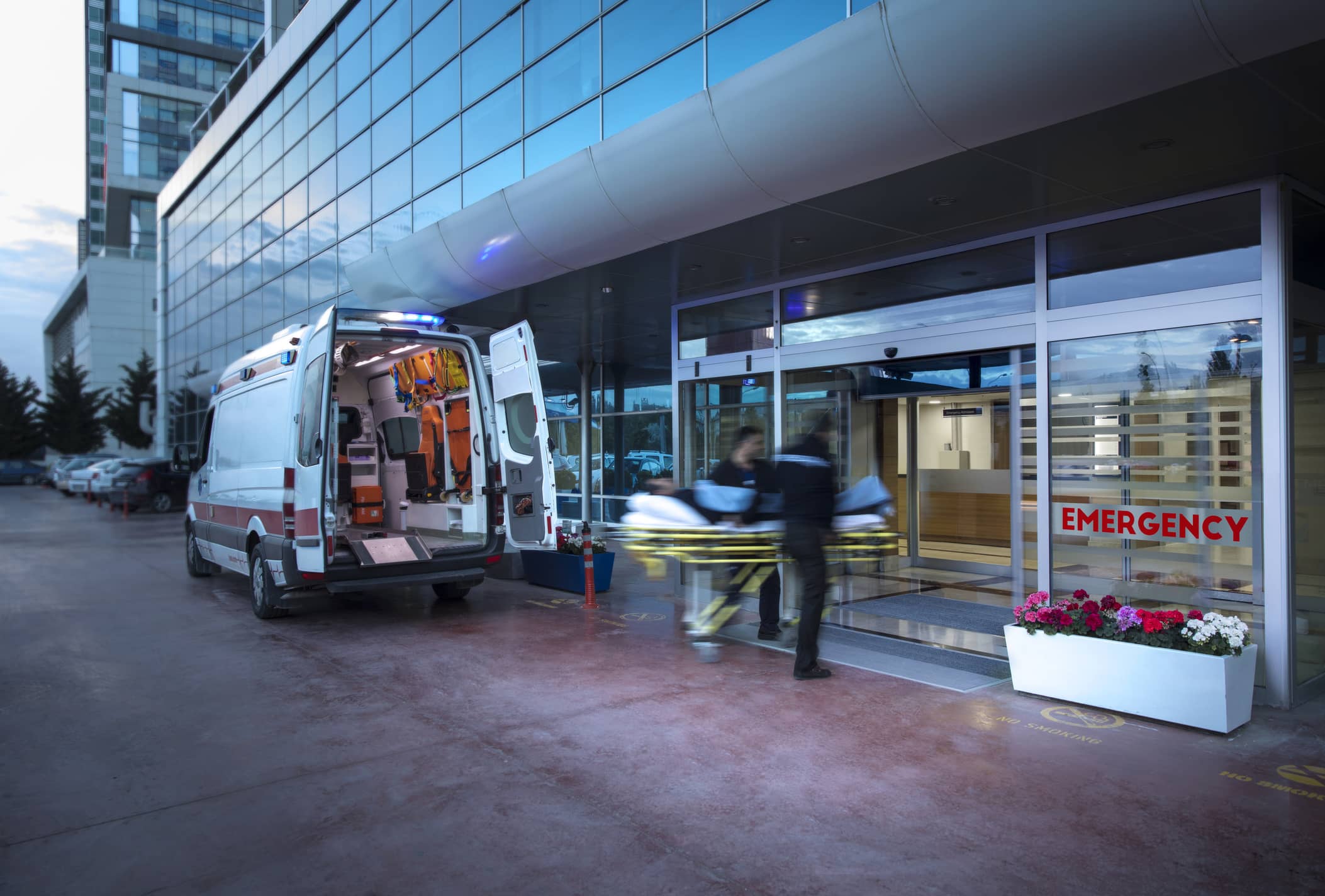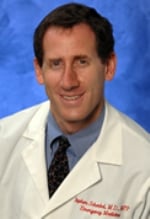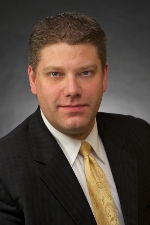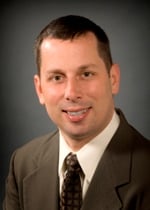
Solving the Complex Issues of ED Patient Throughput
It’s a fact of life: people do not like waiting, especially when ill or injured. Yet patients often must wait when seeking emergency department care, particularly when backlogs develop.

Stephen Schenkel, M.D., MPP, said that more patient volume and delays admitting to inpatient units contribute to ED backlogs.
“People don’t want to wait,” said Stephen Schenkel, M.D., MPP, chair of the department of emergency medicine at Mercy Medical Center in Baltimore, which treats 60,000 people annually. “Waiting is ‘how long I waited’ and a perception of waiting.”
Patient flow data can help quantify actual times, but throughput quality measures designed to improve quality of care and provide patients with information to make a more informed decision may not present the complete picture. A recent study involving 424 U.S. hospitals, published in the Annals of Emergency Medicine, found 25-minute longer median wait times in larger emergency departments (EDs), treating 60,000 or more patients annually, than in departments serving 20,000 or fewer people. Overall median wait time was 34 minutes.
Lead study author Jesse M. Pines, M.D., MBA, FACEP, of the departments of emergency medicine and health policy at George Washington University (GWU) in Washington D.C., said in a written statement that “looking at the raw times, a patient might choose a smaller, rural hospital with shorter waits without considering that certain hospitals might not be the best for their particular emergency.”
Other outside factors that contributed to longer wait times in the GWU study were hospital teaching status, patient age profiles and injury profiles. Pine reported that bigger hospitals with more visits tend to have worse flow and longer wait times, either because of the complexity of their patient loads or because managing flow in larger urban hospitals is more of a challenge.
Richard Nelson, M.D, professor and vice chair of the department of emergency medicine at The Ohio State University in Columbus, said smaller facilities often will have beds available.

John Milne, M.D., has developed several innovative solutions to speed arrival-to-discharge to less than two hours at Swedish Medical Center’s Issaquah campus.
“If you get too big, the ED bogs down,” added John Milne, M.D., vice president of medical affairs for Swedish Medical Center’s Issaquah campus. “You cannot be nimble enough to move patients through.”
He believes the “sweet spot” for optimal efficiency is 20,000 to 40,000 annual visits. Therefore, rather than expanding the hospital’s emergency department, Swedish opened two freestanding EDs in areas that had been feeding the main hospital. Volume ranges from 15,000 to 25,000 in the three EDs Milne oversees. Throughput at all three remain better than average.
“Urban hospitals will be particularly challenged, and their numbers will not look as good as rural and suburban hospitals,” added Robert Hitchcock, M.D., FACEP, vice president and chief medical informatics officer at T-System in Dallas, which provides ED documentation and workflow software and services, and a practicing emergency medicine physician at Manatee Memorial Hospital and Lakewood Ranch Medical Center, community hospitals in Bradenton, Fla.
“[The measures are] going to show those hospitals have an opportunity to institute change,” Hitchcock said. However, “they have the greatest opportunity to show significant improvement over time.”
What causes delays in the ED
With EDs staffed 24/7 with physicians, nurses and support staff, why does it take so long for patients to receive care?
“More people are coming to visit us,” Schenkel said. “We are about 6 percent over last year, and that’s part of a national trend that has been there for years.”
Centers for Disease Control and Prevention (CDC) data show ED visits were up 9.9 percent in 2009; 136 million visits compared to 123.8 million in 2008.
Primary care physicians often refer patients who cannot be seen, and the average lay person thinks many non-emergent conditions require immediate care.
“We are where people go when they can’t go anywhere else,” Schenkel said. “We are the safety net. When people are sick, we take care of them.”
Nelson added that while many people, especially policymakers, think patients showing up for primary care tie up the beds, “that’s not the case. I can see a lot of patients with sore throats and toothaches in a short amount of time.”
Those patients go to Ohio State’s fast-track area. The ED treats 72,000 patients annually.
What would help in the ED?
Swedish Medical Center’s EDs focus on getting low-acuity patients in and out.
“Fast track relieves the burden on the rest of the department and frees you up to take care of those high-acuity, sicker patients in a more efficient manner,” Milne said.
In addition, Swedish has embraced parallel rather than sequential processes, which has decreased average cycle time. From arrival to discharge now takes 70-100 minutes, depending on the ED, compared to an average in Washington State of five hours. That record has earned the hospital accolades for sustained patient satisfaction of more than 95 percent.
Patients are brought back immediately and “swarmed,” with the primary and charge nurses and physician obtaining a history and a technician taking vital signs, simultaneously within three minutes. Within 15 minutes, assessments are complete, an IV started, labs drawn, and imaging studies and treatment initiated. Then registration people finish the paperwork.
“From a financial perspective, having patients who are sitting there lingering in a bed is costing the hospital,” Milne said. “The more patients we process through in an efficient fashion, the better off we will be.”
Part of the problem is that EDs never know how many people are going to walk through the door and what their presenting problems might be. As incoming volume pushes an ED to its choke point, different processes could go into effect. For instance, if 25 victims of a bus accident arrive at once, Schenkel suggested trying an alternative approach. One idea might include seeing the patients in groups or in a staging area; or, if the cases are straightforward, putting a physician or mid-level provider in the triage area to simultaneously assess the bolus of people.
If volume peaks are known, perhaps the facility needs to bring on a physician assistant or empower nurses to do more. However, leadership must balance staffing with economics, Schenkel said.
Jared Rhoads, a senior research specialist at CSC’s Global Institute for Emerging Healthcare Practices in Boston, added that variation is the enemy of throughput, whether the variation occurs in the volume, time of day or type of patients.
“There’s a constant randomness,” Rhoads said. He recommended simplifying and standardizing processes to reduce the variation and using electronic tracking tools, such as a bed manager or wall-mounted flow board, to help manage priorities.
“The systems are fairly simple to implement,” said Rhoads, co-author of Using Tracking Tools to Improve Patient Flow in Hospitals for the California HealthCare Foundation, but he estimates only 5 percent of EDs are using the tracking tools. In addition to bed management systems, tools to track the location of equipment, patients and fellow staff members can save nurses’ time.
Data from the tracking tools can help bring problems to light, pinpoint specific areas in need of improvement and provide accurate information to show administration to help solve the issues, Hitchcock said.
“After you get a tracking system, you have a wealth of information,” Hitchcock said. “Now you can focus on certain areas and affect real change.”
Hitchcock recommended using Six Sigma Lean to improve and streamline processes.
“Every second you can shave off the patient encounter makes it easier to care for patients, whether there is a hospital overcrowding problem or not,” Hitchcock said. “No amount of trying to fix the ED is going to solve the problem if the hospital is full and unable to admit patients.”
A hospital-wide solution
John D’Angelo, M.D., FACEP, chairman of the emergency department at Glen Cove Hospital, which treats 22,000 patients annually, explained that while delays are caused by a multitude of factors, the greatest are on the output side of the ED process.

John D’Angelo, M.D., FACEP, said the solution to ED back ups is greater efficiencies and shorter length of stays on inpatient units.
“The time from disposition, when it is determined the patient will be admitted to the hospital, is excessive in most emergency departments and is much worse in bigger, larger facilities,” D’Angelo said. “That backlog of admitted patients consumes resources the emergency department has and limits the capacity on the front end where people are arriving.”
A lack of inpatient beds contributes to the problem, especially as hospitals continue to close and an aging population requires more care, D’Angelo said.
“There is a crisis going on in the emergency department with boarding patients, waiting for a hospital bed,” said D’Angelo, explaining the patient may wait hours or days before being placed in a room.
Pending admissions and behavioral-health patients who may spend days in the ED waiting for placement in a psychiatric facility effectively reduces the size of the emergency department, Nelson said.
“If you have a 60-bed emergency department and 20 beds are tied up with admitted or psychiatric patients, that means you really only have a 40-bed department,” Nelson said.
Not only are pending admissions reducing the bed capacity, those patients require nursing care. ED supplies and pharmaceuticals are not set up for ongoing care, exacerbating the problem, Milne said. Solving this issue requires a multidisciplinary approach and a change in philosophy. Some EDs are moving patients who are clinically ready to the inpatient unit, even if a bed is not open, finding patients get into rooms more quickly than boarding in the ED.
“Reasons for the problems are different,” Milne said. Physicians may not discharge quickly enough. Some hospitals have cut housekeeping staff, so there are not enough people to terminally clean the rooms. In California, patients may not be able to move up to a bed if there is not enough nursing staff to maintain the mandated patient: nurse ratios. Elected surgical patients may take priority.
The sooner ED personnel let nursing supervisors know about a possible admission, the more quickly they can start working on finding a bed. At Swedish, charge and supervisory nurses meet every eight hours to check the status of admissions and possibilities for discharges.
“A lot can be improved by better communication,” Milne said.
Hitchcock said EDs are dealing with the ED holds with an escalating response process from hospital administration, or calling private physicians to come in and discharge their patients.
Other facilities are dealing with the problem by setting up separate admission holding areas near the ED to free up emergency beds.
D’Angelo said, “The solution is the inpatient units having more efficiency” and decreasing the number of days patients are in the hospital. He suggested eliminating unnecessary testing, providing services seven days per week and sticking to addressing the admitting diagnosis and not doing other things because the patient is in house.
“Reducing the length of stay would have a great impact on the backlog in the emergency department,” D’Angelo said.
While hospitals are now measuring wait times and striving to provide faster care, Schenkel cautioned that improving throughput will bring more patients.
“It’s complicated,” Schenkel said. “If you are successful, more people come.”
